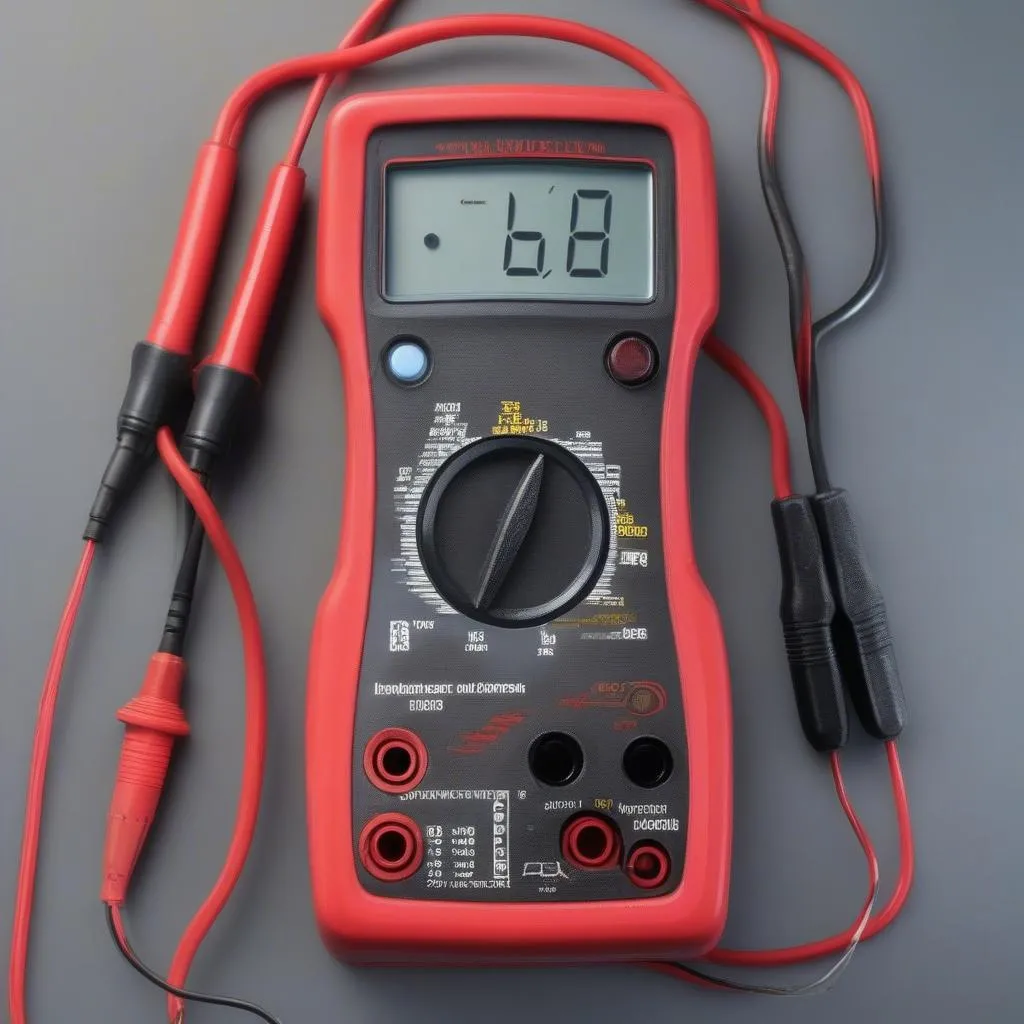One of the most common causes of a car battery drain is a parasitic draw from the anti-theft system. But how many amps does an anti-theft system actually draw?
A car’s anti-theft system, while crucial for security, can sometimes become a silent battery drainer. Understanding how much power it consumes is essential for maintaining a healthy battery and avoiding unexpected starting issues.
Why Does My Anti-theft System Drain My Battery?
Before we delve into the specifics of amperage, let’s understand why an anti-theft system might drain your battery.
The system, even when the car is off, remains partially active, monitoring for unauthorized entry. This constant monitoring requires a small amount of power. However, various factors can lead to an excessive draw, such as:
- Faulty Components: A malfunctioning alarm siren, a faulty hood latch sensor, or a problematic door switch can cause the system to stay on high alert, leading to increased power consumption.
- Software Glitches: Like any other electronic system, car security systems can experience software issues that disrupt normal power consumption patterns.
- Installation Errors: Incorrectly installed aftermarket anti-theft systems are a common culprit behind excessive battery drain.
How to Identify if Your Anti-Theft System is Drawing Too Much Power
There are several tell-tale signs that your anti-theft system might be drawing too much power:
- Dead Battery: A dead battery, especially after your car has been sitting idle for a few days, could be the first indicator.
- Slow Engine Crank: If your engine cranks slowly when starting, it might be struggling with a partially drained battery.
- Alarm System Malfunctions: Frequent false alarms, an alarm that won’t disarm, or other erratic behavior can indicate an issue.
Tools You Need to Check Your Car’s Amperage Draw
Before you begin, here’s what you need:
- Multimeter: This handy tool measures the electrical current, including the amp draw.
- Owner’s Manual: Your car’s manual provides valuable information about fuse box locations and acceptable amperage draw for the anti-theft system.
How to Check the Amp Draw of Your Anti-theft System:
- Prepare Your Vehicle: Park on a level surface, engage the parking brake, and turn off all accessories.
- Locate the Fuse Box: Consult your owner’s manual for the location of your fuse box (often under the dashboard or in the engine bay).
- Identify the Anti-Theft Fuse: Again, refer to your owner’s manual to locate the specific fuse for your anti-theft system.
- Set Up Your Multimeter: Set your multimeter to the DC amps setting. Most parasitic draws are relatively small, usually in the milliamps (mA) range.
- Connect the Multimeter: With the ignition off, disconnect the negative battery cable. Connect the red lead of your multimeter to the disconnected cable and the black lead to the negative battery terminal.
- Observe the Reading: The multimeter will display the amperage draw of your entire vehicle. Ideally, this should be under 50 milliamps (0.05 amps) after the system has had time to “go to sleep” (usually around 30 minutes).
- Diagnose the Issue: If the draw is significantly higher, begin by pulling out the anti-theft system fuse and observe the reading. If the reading drops considerably, your anti-theft system is likely the culprit.
Important: If you’re uncomfortable working with electrical components, it’s best to consult a qualified mechanic or an auto electrician.
 Car battery and multimeter
Car battery and multimeter
Frequently Asked Questions:
Q: How many amps does a car alarm draw when armed?
A: While armed, a typical car alarm draws very little power, usually around 5-20 milliamps (0.005 – 0.02 amps). This minimal draw ensures your battery doesn’t drain overnight.
Q: How do I know if my car battery is drained due to the anti-theft system?
A: One of the most common indicators is a dead battery, particularly if your car hasn’t been driven in a while. If your vehicle has other symptoms like dim headlights or slow engine cranking, a parasitic draw, possibly from the anti-theft system, could be the reason.
Q: Can I disconnect my car alarm to prevent battery drain?
A: While it’s technically possible to disconnect your car alarm, it’s not advisable to do it yourself unless you possess advanced knowledge of car electrical systems. Disconnecting the wrong component might not only disable your alarm but also lead to other electrical issues.
Q: What are common problems with car diagnostic software?
A: Some common issues include compatibility problems with certain car models, software bugs and glitches, difficulty in understanding or interpreting diagnostic results, and lack of comprehensive troubleshooting guides. Choosing a reliable diagnostic software brand like Cardiagtech can often mitigate these issues.
 Laptop displaying car diagnostic software
Laptop displaying car diagnostic software
Conclusion
A well-functioning anti-theft system offers invaluable peace of mind but should not come at the cost of a drained battery. By understanding how to check your system’s amperage draw, you can ensure it remains a protector, not a power predator. If you suspect your anti-theft system is drawing too much power, consider reaching out to a trusted mechanic or an auto electrician for a professional diagnosis and solution.
For comprehensive car diagnostic solutions and top-tier equipment, explore the range of products offered by CARDIAGTECH.
